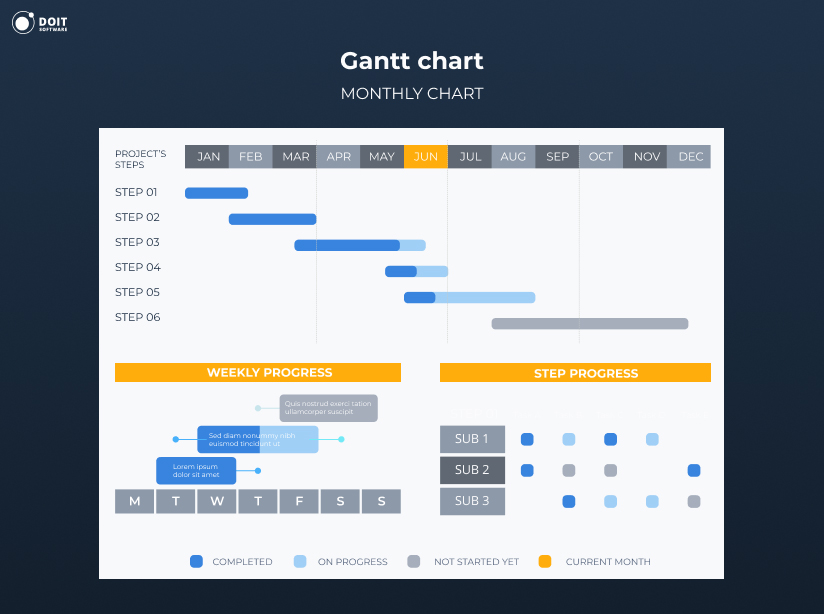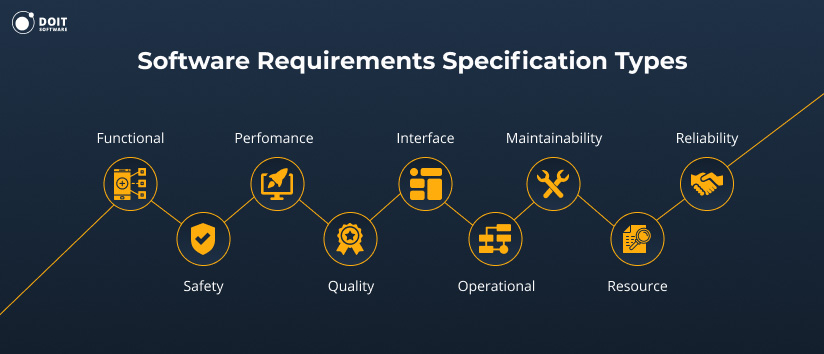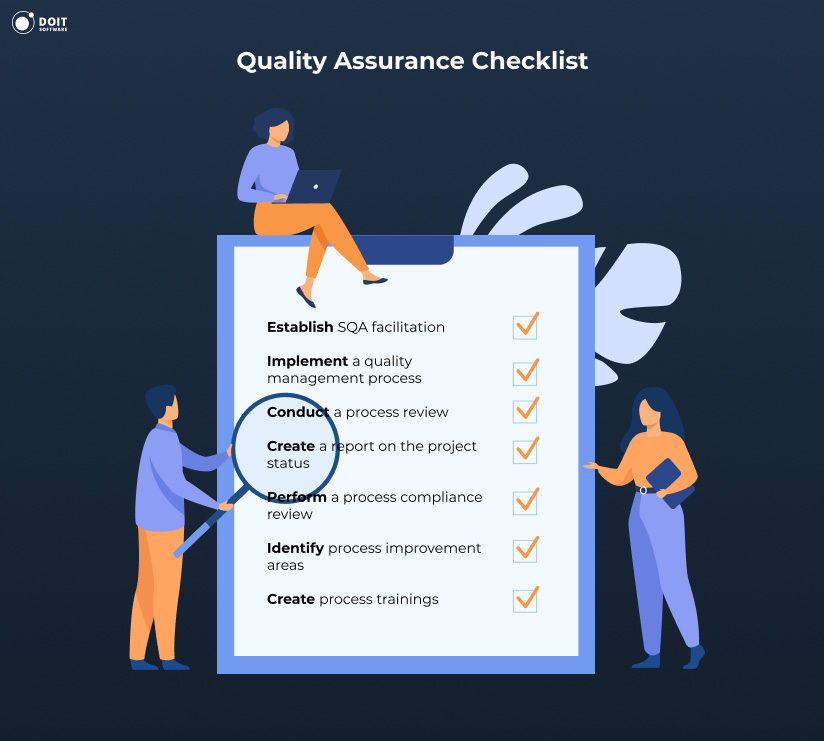Creating a legitimate software development plan is by no means an easy task. The planning process is especially challenging when it comes to complex projects on a grander scale. Why do software projects fail you ask? Most of these failures can be attributed to failed software project planning. Some of the more specific reasons are the following:
The software development plan, sometimes referred to as SDP, describes all processes, step by step, that will be required to bring the project to life, covering aspects like planning, ideation, development, documentation, deployment, and sometimes maintenance. The main idea behind the software development plan is to gather as much information as possible before actual work begins in order to exercise maximum control over the project. It describes the approach the development of the software will undertake and should be viewed as the primary plan to direct the development effort.
As the saying goes – “If you fail to plan, you plan to fail.” There are a number of different “Software Development Life Cycles” (SDLC) in popular use today, each offering their own structure and approach to the challenges of transitioning from a project’s beginning to its end. Depending on requirements, different methodologies will be used. Each offers a unique approach, so choosing the right one depends heavily on not just the expected end result, but also on the parameters by which the software project plan will be executed. The most popular among them are:

There are a multitude of software development planning tools that find popular use across projects of all shapes and sizes. These universally appraised pieces of software help project managers organize and manage all of their tasks in an efficient manner. The most popular among them are the following:
Check out our article “Toptal vs Upwork: Where to Find the Best Software Developer?”
Using the aforementioned project management tools will undoubtedly assist the development process in a major way, but there are a number of time proven practices that should be considered mandatory for any project that is expected to be a success from start to finish.
Bringing all of these points together is, of course, the software development plan, which will be used by:

The project manager, who will use it to plan the project’s timeline and resource requirements, in addition to tracking the general progress in accordance to the software development schedule.

Project team members, who will use it as a guideline for what they need to do, when they need to do it, and what other tasks await completion.
Remember, knowing how to plan a software project is certainly good, but it won’t matter if the development team isn’t up to par with the task.
Since the software development plan will serve as the backbone of the entire project from start to finish, it must contain as much valuable information as possible. The purpose here is to outline the entire plan for developing, modifying, or upgrading software, while writing down details on how each step during the SDLC should be approached. A proper software development plan must include:
For someone inexperienced in this matter, this will all seem overwhelming at first, and that is perfectly alright considering the complexity of an SDP. If you are looking to start out with a more simple approach, you can find a software development plan template for a more comprehensible approach to the subject.

Now, viewing the software development plan out of context is never a good idea if you wish to gain an understanding of the project’s fundamentals. In order to see the big picture let’s review a broader topic – a Software development life cycle where planning plays a very important role. This way you will be able to comprehend the scope of the project on a much higher level. So let’s discuss:
Not all of these steps are required in full, should the client wish for only a certain part of the software development plan to be completed, but it is best that all elements are handled by the same group of people working in coordination with each other and familiar with each other’s work processes. Having two separate teams develop the plan is a big step towards undermining the entire project. Software development planning is no easy feat, so having team members with previous planning experience working on it is highly recommended, no matter the project scale. Let’s take a more detailed look at each of these steps.
Get inspired by our article “Onshore vs Nearshore vs Offshore Software Development“
It all starts with some brilliant idea that someone has. It can be represented by a document several pages long with a detailed description of the project (project development plan), or it can be represented by a couple of paragraphs describing the general concept.
At this stage, it is crucial that we fully understand the scope of the project and what the client wants to achieve, which is why talks are held, either by phone, email, or in person in order to clearly formulate the requirements for the project, and to figure out the fundamentals behind everything. This part is arguably the most important as it sets the stage for all others and will determine the flow of the project.
Applying software value stream mapping (VSM) during this phase allows teams to visualize how value flows from initial ideation to final delivery. By identifying inefficiencies, unnecessary delays, or redundant processes early on, VSM helps ensure that planning efforts are focused on maximizing efficiency and aligning development priorities with business goals.
Should you choose to work with us, it is at this stage that we clarify the clauses of the contract, approve the payment procedures and all the important details of our collaboration on the project. Once that is done, a preliminary estimate of the software development plan is prepared. If it suits the client, final details are sorted out and the software requirements specification stage can begin.

In order for the development team and the client to have an identical understanding of what the end result, purpose, and functionality of the software should be like, an analyst is included at this point in the project.
The primary goal of this stage is to translate the client’s requirements for the project into a language the developers will be able to understand. The list of tasks for the business analyst varies depending on the scale of the project and the degree of elaboration of the initial requirements, but in general, it boils down to the following tasks:
It is often a mistaken belief that the business analyst’s work ends after the preparation of all project-related documents and the start of software development. This might be true in the absence of changes during development, but since that is very rarely the case, our team is eyes and ears on the project from start to finish. A crucial member of the team and the project, the business analyst is the link between the development team and the client, helping answer any emerging questions from both sides.
It is much cheaper to work out all functionality details behind the software during the software requirements specification stage rather than the development phase, as newly identified requirements can significantly increase the software development timeline and costs. If there is no dedicated business analyst on the project, this can lead to multiple project edits and shifts halfway through the project, due to misunderstandings between the client and the developers. Delays, overbudget spending, and a mismatch between the results and the initial software development plan goals are some of the reasons you want to have a highly qualified business analyst on the team. Having one will allow the client to control how the project’s requirements are communicated to the development team.
Over the course of the business analyst’s work, the following software development deliverables tend to arise, aiding the team in the development process:
Another crucial stage of the software development life cycle, the goal of the design phase is to make the product enjoyable, understandable, and user-friendly. At this stage, the design team is in active interaction with the business analyst. Together they design the product based on the aforementioned set of elements. Clients can have a design premade before they contact us, or they can start from ground zero. It should be noted that allowing the team to create the UI/UX from scratch will give the development team freedom to create a visual masterpiece that aligns with the project’s goals and functionality requirements.
After the business analyst has thought over the logical elements behind the software, the design team begins work on the graphical interface, bringing the visual aspect of the software to life. The designers are responsible for how the interface will look and react to user actions. At this stage, the team creates screen maps, a detailed prototype, and various graphical elements, taking into account the multitude of possible scenarios that the software will be used for. If the time allows for it, and should the client request so, an interactive prototype is created as a preview of the final product and its functions, demonstrating reactions to various user actions and the general layout.
After the team has a general understanding of the main principles behind the software’s design, the computer programmers can start work on the longest stage of the software development project plan. Their task is to animate and code the layouts in order to obtain an interface with which the user can interact. Interface elements are coded in, logically and functionally linking screens to each other using HTML, CSS, various programming languages, frameworks, and libraries.
While working on the client-side of the user interface, the frontend team prepares the project for the backend developers. The backend team’s task is to implement the logical elements of the software. In other words, these are all the processes that happen outside the user’s browser and computer. The backend includes things like the administration panel, data management, and data transfers.
Another element the back-end developers take responsibility for is to make sure that responses from the server always successfully reach the user, and that all blocks of code function as desired. They are also required to create a convenient and safe environment for filling and updating software content.
As the code is written, our developers make sure to constantly monitor the quality. High-quality code speeds up development. Time spent on debugging and fixing errors is substantially reduced. Our dedicated development team uses a variety of tools to sustain the high-quality workflow we build our reputation on, finding bugs and errors as early as possible, eliminating any potential future challenges.
Agile software development is preferred by the team, working in “sprints”, set periods of time by the end of which all completed work is to be reviewed. Depending on the specifics of the project or the customer’s preferences, we can adhere to various code design standards, keeping the code consistent and easy to read.

Testing is necessary to ensure that all elements of the software perform as expected. This is the part where QA engineers check compliance with design, technical specifications, prepare test documentation, conduct manual and automated testing. All of this is required to check the state of various software elements, improve user experience, and to minimize bugs created during the entirety of the software development process.
QA engineers start their work when the client initially sends in the requirements for the project, or at least the parts for which we are responsible. Before testing the software, QA engineers analyze the documentation, clarify requirements, and participate in discussions during all software development stages.

When the product is tested and in excellent working condition, it can be deployed. If there is a necessity for it, we deploy the project on a server, which we help the client choose and set up its configuration. After the release, we can continue working together by offering support through maintenance or system updates, should the client wish so.
Software project management is a highly complex multi-stage process. These stages can intersect or run parallel with each other during development. Starting out right and building a model software development plan is key to the project’s success. If you have ideas you wish to realize, let us know about them, and we will start making things happen together. We will bring to the table with us the highest software development standards, the latest technical solutions and expertise, organizing all work processes in a manner that will inevitably lead to products of the highest quality.
Transform your idea into a successful product with the DOIT Software team.
Contact usPlanning out the entire software project in its early stages of development will allow you to establish reasonable plans for performing software engineering, software design, and overall project management. When you plan on investing money and time into an idea, it makes sense to have an idea of where you will go and how you will do it.
Starting out right can be a challenge of its own. Any software project should begin with a software development plan. You must define what the development process will look like, which tools and technologies will be used, as the initial stages of brainstorming and planning set the stage for the entire project. Having documentation that can be referred to as a guideline will make everyone’s life easier, and the project – less prone to unexpected issues.
Start by clarifying your goals and intentions for the project. Once that is done, document aspects such as required resources, budget, and time parameters in order to have an outline understanding of the scope of the project. Next, make sure you have the right people for the job, as software development requires a multitude of different skill sets. Finally, choose a methodology for software development and progress tracking that best suits the project.
The development process consists of six primary steps. In order, they are the following: assessment and planning; software requirements specification; design; development; quality assurance; delivery and support. All are equally important, with each step building on the previous one. Planning these steps out in advance and having the right people handle each step are essential to finding success with a project.










